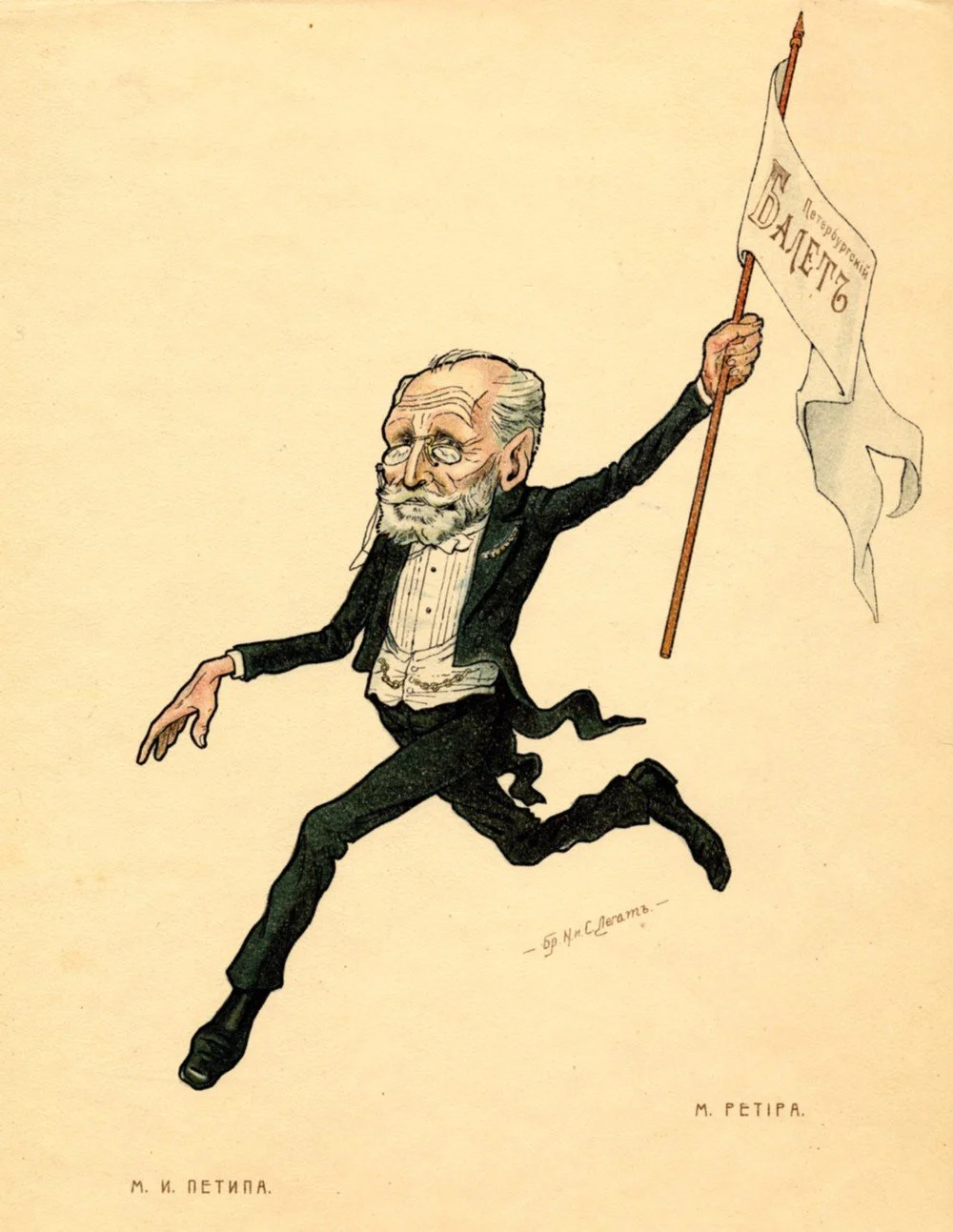Ballet Across the Globe: Marius Petipa
Caricature of Marius Petipa. Nikolai and Sergei Legat, The Russian Ballet in Caricatures, 1902-1905.
It’s nearly impossible to think about ballet without the imagery of Swan Lake, The Nutcracker, and Sleeping Beauty emerging in the mind's eye. These ballets often showcase sparkling grace through luscious scores; their contents and fantasy worlds have inspired enduring admiration of the art form and will probably do so for centuries to come. The credit goes to classical ballet’s formative choreographic voice: Marius Petipa. Responsible for the majority of Russia’s classical ballet canon, Petipa’s choreography has shaped the Mariinsky Theatre and the ballet world at large’s repertoire, making him the most influential choreographer in ballet’s history. Petipa produced more than 60 full-length ballets and is considered one of the primary sources for Agrippina Vaganova’s codified method for professional ballet training. Marius Petipa’s choreography has served as the foundation for Russian balletic style since its development throughout the late 19th century. His choreography utilizes symmetrical aesthetics through methodical geometric patterns, such as diagonals, manegés (a circle of pirouettes or jumps at the end of a variation), and formulaic sequences of ballet steps. Despite their repetition, these sequences prove thoroughly engaging due to their synchronicity with classical scores. When watching his choreography, a character’s innate sensibility rises to the surface, creating a visual collage of harmony between body and soul– it is thanks to such seamlessness that his works have withstood the test of time.
Nearly two centuries ago, on 11 March 1818, Marius Petipa was born in Marseille, France. His mother, Victorine Grasseau, was an actress and drama teacher, and his father, Jean Petipa, was a famed dancer, choreographer, and ballet master. Marius and his older brother Lucien began their dance careers training under Jean at the age of seven in Brussels. Marius attended Grand College as well as the Brussels Conservatory, where he studied violin. Despite a less-than-enthusiastic beginning in ballet, he eventually embraced it, performing for the first time at age nine in La Dansomanie at Théâtre de la Monnaie in 1827. After relocating to Bordeaux in 1834 due to the Belgian Revolution, Marius trained under Auguste Vestris while his father attained “Premier maître de ballet” status at the Grand Théâtre de Bordeaux, essentially dubbing him the primary ballet master for the company. Eventually, the family moved to Nantes, and Marius earned the rank of Premier Danseur at Ballet de Nantes in 1838, where he began choreographing his own work at twenty years old. After dancing in principal roles in France with the Paris Opera and in Madrid with Teatro del Circo, he eventually fled from Spain to St. Petersburg in 1847 at twenty-nine to dance with the Imperial Ballet (now known as the Mariinsky Theatre). He staged ballets and danced in them until retiring from the stage in his early forties to take on the position of First Ballet Master, which is equivalent to today’s resident choreographer position. This was a title he held from 1871 until 1903. Petipa was incredibly industrious, creating ballets like Don Quixote (1869) and The Pharaoh’s Daughter (1862), while also reviving works like Le Corsaire (1868), La Bayadere (1877), and Giselle (1899), among many others. He officially retired at eighty-five before passing at ninety-two in 1910. Many of Petipa’s ballets are still performed across the globe, and although they vary in style, whether romantic or upbeat, Petipa’s works continue to remind us how powerful love, heartbreak, and death can be when expressed through classical ballet.
